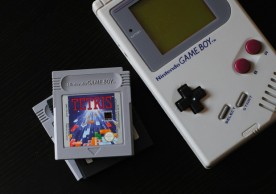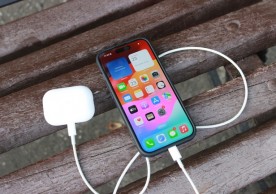Samsung has officially unveiled the Samsung Galaxy Note 3, but how does it fare against its Galaxy Note 2 predecessor? Is it worth the upgrade?
The new Samsung Galaxy Note 3 is, without a trace of doubt, one of the most anticipated devices of this year. It is Samsung's latest statement to the phablet world it created and boasts high-end specs that make it a top-of-the-line device.
"We introduced the original GALAXY Note in 2011 and launched a whole new smart device category. The undeniable success of the GALAXY Note strengthened our conviction that consumers want higher quality features for smart devices and they want those new features to make their lives better," said JK Shin, CEO and President of IT & Mobile Division at Samsung Electronics.
"Samsung GALAXY Note 3 is a powerful, original approach that enables users to tell the stories of their lives through dynamic and seamless expressions of their passions across work, play and life experiences. With a simple click of the S Pen button, users can unlock opportunities for self-expression, features that transform everyday activities into extraordinary events and access to new experiences delivered to them on Note 3's larger screen."
The hype is huge and the stakes are high. The Galaxy Note 3 is finally here. As usual when a new iteration of a popular product makes its debut, however, consumers are wondering whether to upgrade or settle for the previous generation. For those pondering whether the Galaxy Note 3 sports truly notable improvements over its predecessor, here are the main differences between the two generations.
Processor, display, storage
The Samsung Galaxy Note 2 came with a quad-core Exynos processor clocked at 1.6GHz, a massive 5.5-inch HD Super AMOLED display with a resolution of 1280 x 720 and a pixel density of 267 pixels per inch (ppi), 2GB of RAM and storage configurations of 16, 32 or 64GB, all expandable up to an addition 64GB via micro SD.
The new Samsung Galaxy Note 3, meanwhile, comes with either an Exynos octa-core processor clocked at 1.9GHz or a quad-core Qualcomm Snapdragon 800 processor clocked at 2.3GHz, depending on region. It bumps up the display size to 5.7 inches. The display is full HD Super AMOLED with a resolution of 1920 x 1080 and a pixel density of 386 ppi. It comes with 3GB of RAM, 32GB or 64GB internal storage configurations and a micro SD card slot for additional memory of up to 64GB. In this category, the new phablet offers some clear improvements over its predecessor and might be worth an upgrade for many.
Camera
Last year's Galaxy Note 2 sports an 8-megapixel rear camera with 1080p video capture and a 1.9-megapixel front-facing shooter. The Galaxy Note 3 raises the bar in the camera department with a 13-megapixel rear shooter with 1080p video capture and even 4K in some markets. The front-facing shooter is also slightly upgraded to 2 megapixels.
Battery, connectivity, OS
The Galaxy Note 2 has a powerful 3,100 mAh battery and it ran Android 4.1 Jelly Bean at launch, but is now upgradeable to Android 4.2. Rumors indicated that it would get the latest version of Android soon, but nothing materialized so far. In terms of connectivity, it supports HSPA+ and LTE radios, Bluetooth 4.0, and NFC.
The Galaxy Note 3, meanwhile, packs a larger 3,200 mAh battery and will rock the latest Android 4.3 Jelly Bean right out the box. Connectivity-wise, the phablet supports HSPA+ and LTE Advanced radios, Bluetooth 4.0, and NFC. The latest version of Android also means it supports Bluetooth Low Energy (LE), which allows it to pair with various devices such as the new Galaxy Gear smartwatch.
Conclusion
As expected, the Samsung Galaxy Note 3 comes with some notable improvements over its Galaxy Note 2 predecessor. It boasts a better processor, a larger display with a higher resolution, more RAM, an improved camera and the latest Android version. It also has a higher-capacity battery, enhanced S Pen functionality and is lighter and slimmer than the Galaxy Note 2.
These are just a few of the aspects in which the two phablets are different. There are many other changes, small tweaks and improvements that naturally come along with a new generation. It ultimately comes down to personal choice whether these improvements listed here are big enough to be worth an upgrade, but the Galaxy Note 3 will likely become a hit in no time.
related stories
more stories from Mobile
-
Game Boy Emulator for iPhone Now Available in App Store Post Rule Change
Game Boy Emulator Now on App Store! Dive into nostalgic gaming with the newly available emulator. Read more in our latest article!
ernest hamilton -
iPhone 14 Screen Powers Revolutionary Holographic Display Demonstrated by Researchers
Revolutionary Holographic Display Demonstrated by Researchers, Possibly Powering iPhone 14 Screens. Explore the cutting-edge tech in our latest article!
ernest hamilton -
Google Pixel 9 Series Set to Receive Emergency Satellite Connectivity and Upgraded Modem
Google Pixel 9 Series to Get Emergency Satellite Connectivity & Enhanced Modem. Stay tuned for the latest updates on Google's upcoming flagship phones!
ernest hamilton -
Epic Games Proposes Overhaul to Google App Store After Antitrust Victory
Epic Games proposes App Store overhaul post-antitrust victory. Dive into the future of app distribution with Epic's groundbreaking proposal. Read more!
ernest hamilton -
Galaxy AI Features to Extend to Last-Gen Samsung Phones, Including S21 Series
Exciting news! Galaxy AI features extending to last-gen Samsung phones, including S21 series. Stay updated on the latest advancements in Samsung technology. Learn more!
ernest hamilton -
Android 15 Beta 1 Released: Enhancing Performance and Developer Support
Get ahead with the latest! Android 15 Beta 1 released, enhancing performance and developer support. Explore the future of Android with the beta release. Learn more!
ernest hamilton -
Google One VPN Discontinuation Announced, Pixel VPN Upgrades Incoming
Google One VPN discontinuation announced, Pixel VPN upgrades incoming. Stay ahead with the latest developments in online security. Learn more!
ernest hamilton -
Phone Batteries Could Last 50% Longer with Increased 5G Tower Construction
Phone batteries could last 50% longer with increased 5G tower construction. Explore the implications of this exciting development. Learn more!
ernest hamilton













